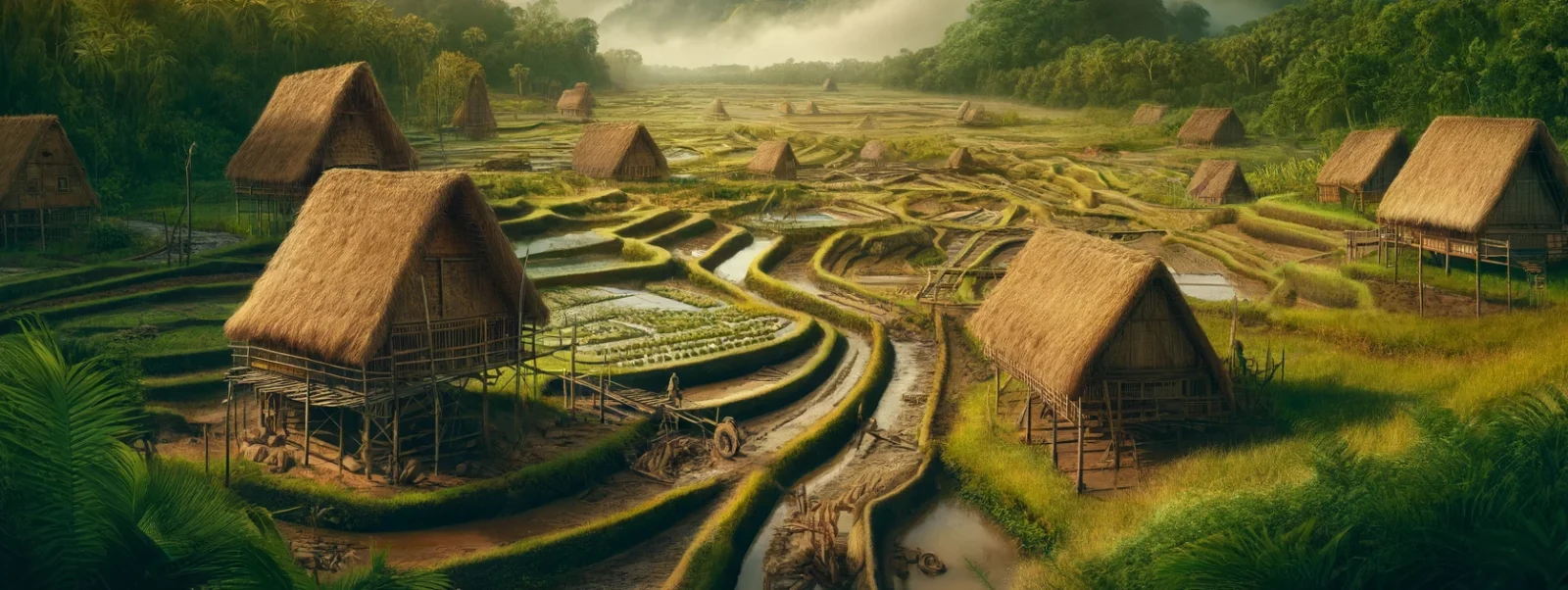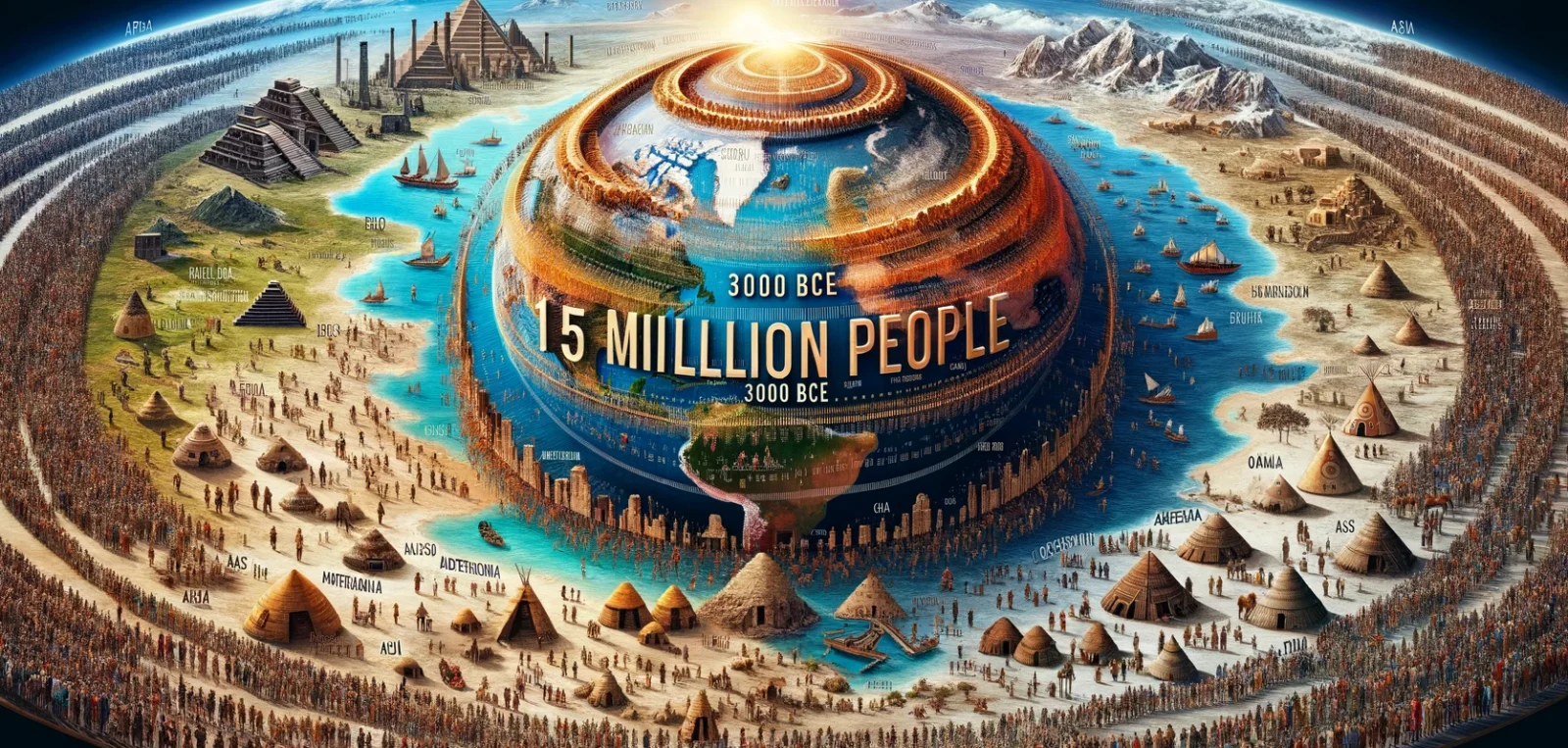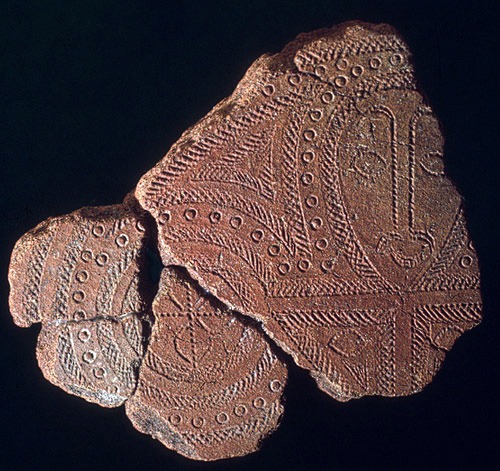Land TL: 1. Africa & Middle East | 2. The Americas | 3. Asia | 4. Europe-Mediterranean | 5. Oceana-Australasia
History by historical land mass is yet another wonderful lens into knowledge. These insights are the backbone to Mike‘s articles and his longer effort books. A part of his lifelong commitment to study. While they are not complete, they are useful.
History of the Lands: Oceana
The Sentinelese are believed to have been isolated since the last major initial human migrations out of Africa 60 to 70 thousand years ago. Their isolation has likely preserved unique genetic traits. The Sentinelese are related to other indigenous peoples of the Andaman Islands, such as the Onge, Jarwa, and Great Andamanese. Studies on these groups indicate that they have some of the earliest genetic markers found in Asia. The genetic diversity among the Andamanese tribes, including the Sentinelese, is thought to be low due to their small population sizes and long-term isolation. Due to their isolation, the Sentinelese may lack immunity to common diseases found elsewhere–a significant concern.
Long before the sails of European explorers dotted the horizon, the Australian continent witnessed the arrival of its first human inhabitants. Archaeological evidence, such as ancient tools and cave art, suggests that people arrived in Australia at least 65,000 years ago, marking one of the earliest known human migrations out of Africa. These first Australians, ancestors of today’s Aboriginal and Torres Strait Islander peoples, developed rich cultural traditions and adapted to the diverse environments of the continent, from its arid deserts to its lush coastlines. Their legacy is a testament to human resilience and ingenuity, shaping the land that would later be known as Australia for tens of thousands of years before European contact.
Cognitive Revolution
50,000 BCE – 70,000 BCE. Population range: 500,000 to 2.5 million.
Given the uncertainties and lack of direct data, the following are speculative estimates.
- Africa-Middle East: 50-60% or 600,000 to 1 million people
Africa, being the origin of modern humans, likely had the highest population density at this time, particularly in Sub-Saharan regions which were more conducive to human habitation due to their climate and available resources. - Asia: 40% or 200,000 to 400,000 people
- Europe-Mediterranean: 10% or 50,000 to 100,000 people
- The Americas: 0.
- Oceana-Australasia: 1% or 10,000 to 15,000 people
The initial colonization of Australia around 50,000 BCE by modern humans involved small, isolated groups who managed to navigate sea crossings, leading to a very low initial population density. The rest of the remote islands of Oceania were among the last to be reached by humans.
A Shared Earth! Neanderthals-Hobbits-Flourensis
Around this time, Homo sapiens shared the Earth with other hominin species. Neanderthals were still widespread in Europe and parts of western Asia. In Asia, particularly on the islands of Indonesia, Homo floresiensis, often referred to as the “Hobbit” due to their diminutive stature, survived until about 50,000 years ago. Additionally, Denisovans, a less visually documented but genetically distinct group, also roamed Eurasia, leaving behind a genetic legacy that persists in modern humans, particularly among populations in Melanesia.
Late Stone Age
Mesolithic Period: 10,000 BCE – 6000 BCE.
- Africa-Middle East: 30% or 1.2 million peopleg
- Asia: 40% or 1.6 million people
- Europe-Mediterranean: 15% or 600 thousand people
- The Americas: 10% or 400 thousand people
- Oceana-Australasia: 5% or 200 thousand people
Earliest known agrarian society in the Oceana-Australasia zone: Kuk Swamp in the Highlands of Papua New Guinea provides evidence of early agricultural innovation, including ditched drainage systems for taro cultivation. This represents one of the earliest known instances of agriculture in Oceania, showing complex environmental management by its inhabitants.
Imagined image: The Kuk Early Agricultural Site around 7000 BCE in the highlands of Papua New Guinea, showcasing a landscape marked by sophisticated drainage systems and irrigated taro fields. The typical homes, constructed from bamboo and thatch and elevated on stilts, reflect the innovative adaptations of this early agrarian community to their wet, mountainous environment.
Stone Copper Age
Chalcolithic Period: 3,000 BCE – 500 BCE.
- Africa-Middle East: 36% or 5 million people
Early civilizations include Egypt and Mesopotamia with a relatively higher population density. - Asia: 36% or 5 million people
Early civilizations include Indus Valley and ancient China. They saw early urban development and agriculture which supported larger populations. - Europe-Mediterranean: 14% or 2 million people
Smaller due to the varied climatic conditions and the later development of agriculture compared to the Middle East. - The Americas: 7% or 1 million people
More sparsely populated with many diverse hunter-gatherer communities and early agricultural societies, particularly in regions like Mesoamerica. - Oceana-Australasia: 7% or 1 million people
These regions were among the least densely populated, with scattered tribal groups primarily leading hunter-gatherer lifestyles.
The Lapita culture, named after a site in New Caledonia, was an Austronesian people known for their intricate pottery and advanced navigation skills. Around 1500 BCE, they began spreading eastwards across the vast Pacific, reaching as far as Tonga and Samoa. The Lapita are considered the ancestors of many modern Pacific Islanders, including Polynesians, Micronesians, and some coastal Melanesian populations. Their remarkable journey across the ocean, covering thousands of kilometers in outrigger canoes, stands as a monumental achievement in human exploration and settlement, laying the foundations for the rich cultural tapestry of the Pacific Islands.
The Māori, Polynesian navigators and explorers, reached the shores of Aotearoa, now known as New Zealand, around 1300 CE. Braving the vast Pacific aboard large, ocean-going waka (canoes), they established communities that would flourish into a distinctive culture deeply connected to the land and sea. The Māori developed a rich oral tradition, weaving tales of their ancestors and the spirits that inhabit the natural world. Their arrival and settlement mark a significant chapter in the human history of Oceania, as they created intricate societal structures, advanced agricultural practices, and formidable fortifications known as pā, showcasing a profound understanding of their new environment and a resilient spirit that continues to define Māori culture today.
End of timeline. Review…
Land TL: 1. Africa & Middle East | 2. The Americas | 3. Asia | 4. Europe-Mediterranean | 5. Oceana-Australasia

















